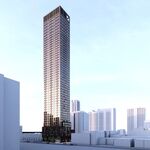interested
Senior Member
More of the older condos are owner occupied as a rule because back then, condo price escalation was not as drastic.
As well, buildings with lots of very small units are designed to cater to investors.
Finally, small buildings with few units tend not to attract as many investors. That said, however, costs tend to be proportionately higher.
If the building exists, the building manager can usually tell you what proportion are renters. In one of the older condos that my mother lives in, they actually publish in the news letter the number of owners and the percentage of renters (other than family members occupying).
Once you get the advise, what CN Tower suggested is a good suggestion and true to a degree.
Our condo in Florida was about 90% owner occupied. When prices started to go crazy, everyone started to buy. We went up to I am guessing 30% non owner occupied. However, compared to alot ofthe newer buildings on the beach, some of which were 90% investors, we did somewhat better. However, this did not shield us fully. We currently are down about 50-60% from the peak of 2006 (which was up 200% from 2000 to put things in perspective) but some of the buildings in Florida are 65-70% down. That is not the problem in Florida however.
The problem is that condo fees are not being paid by alot of deliquent units and as such the other owners are responsible for more than their fees as it is a collective liability. An interesting warning of what could happen if one buys in a building that is predominently investor driven as most new condo starts seem to be in the Core of the city at least.
As well, buildings with lots of very small units are designed to cater to investors.
Finally, small buildings with few units tend not to attract as many investors. That said, however, costs tend to be proportionately higher.
If the building exists, the building manager can usually tell you what proportion are renters. In one of the older condos that my mother lives in, they actually publish in the news letter the number of owners and the percentage of renters (other than family members occupying).
Once you get the advise, what CN Tower suggested is a good suggestion and true to a degree.
Our condo in Florida was about 90% owner occupied. When prices started to go crazy, everyone started to buy. We went up to I am guessing 30% non owner occupied. However, compared to alot ofthe newer buildings on the beach, some of which were 90% investors, we did somewhat better. However, this did not shield us fully. We currently are down about 50-60% from the peak of 2006 (which was up 200% from 2000 to put things in perspective) but some of the buildings in Florida are 65-70% down. That is not the problem in Florida however.
The problem is that condo fees are not being paid by alot of deliquent units and as such the other owners are responsible for more than their fees as it is a collective liability. An interesting warning of what could happen if one buys in a building that is predominently investor driven as most new condo starts seem to be in the Core of the city at least.




